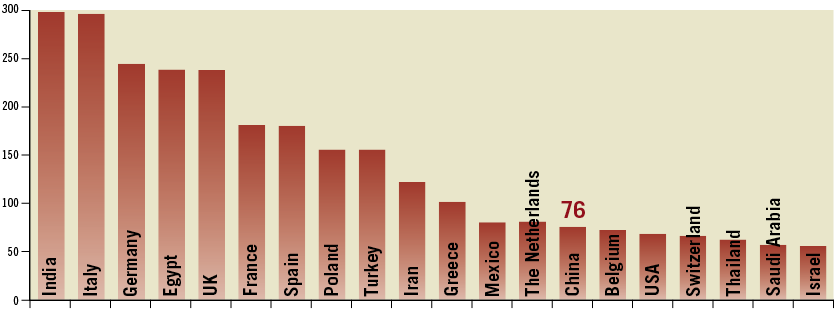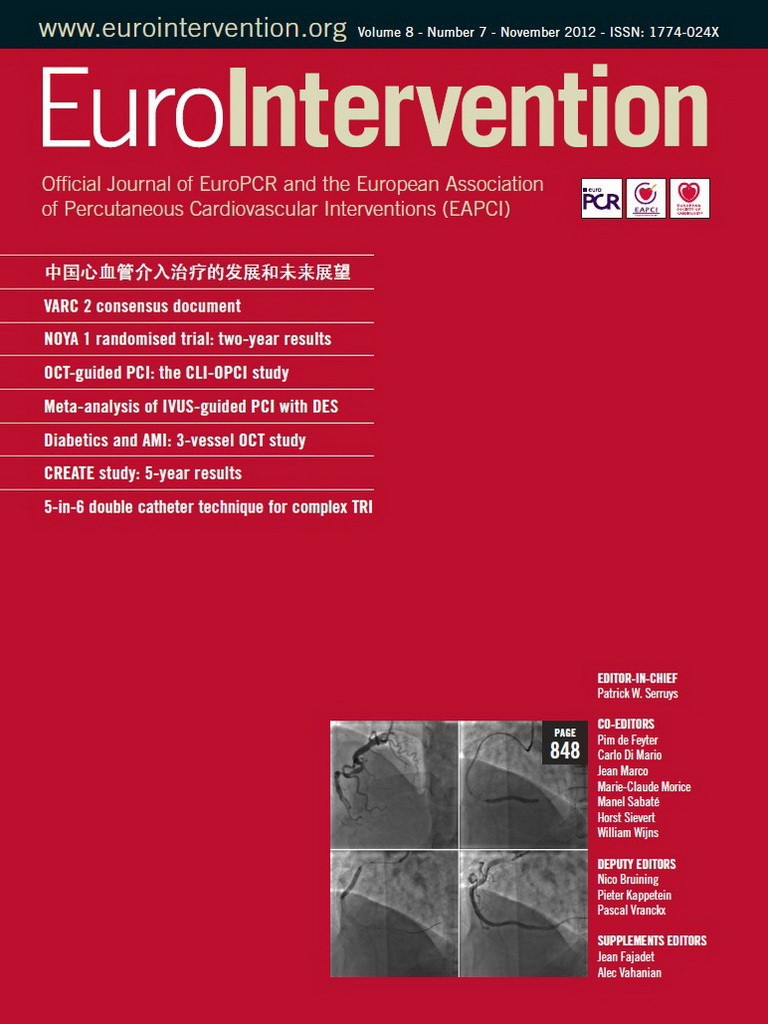In earlier editorials we spoke about our desire to reach the 4,000 member mark by the end of this year and we are proud to say that today we have already reached this goal and are well on our way to surpassing this membership figure. It is interesting that while our association is becoming increasingly represented within Europe itself, we also have a strong membership outside Europe with members coming from India and the Pacific Rim, the Near East, South America and China, where we now have 76 members. (Figure 1)

Figure 1. 2012 EAPCI membership: breakdown of top 20 countries
Historically the EAPCI and our parent organisation the ESC have always been international in outlook and have long sensed that there is much to be gained from our exchanges with our international partners. The EAPCI, linked to the PCR Family and EuroPCR, can point to a proud heritage of organising international meetings, symposiums and other educational events that further these ends. Our activities in Asia and the Pacific Rim are well known, and it is only natural that our association has entertained a close relation with China Interventional Therapeutics (CIT) since its inception.
What are the advantages for specialists outside Europe of joining the EAPCI?
For our colleagues coming from outside Europe, membership in the EAPCI allows them to stay in touch with developments here in Europe, whether through our educational programmes, the development of guidelines or participation in the association’s meeting or in one of our annual summits. Foreign members can act as the contact or liaison between the EAPCI and their own national associations and, through this, further the interchange of knowledge and experience. And while it is clear that becoming a member of one of the leading medical associations provides you with a privileged viewpoint, whether you live in Iran, India, Argentina…or China, it is not a one-way street, but a forum –an exchange– where the experience of all is appreciated.
The evolution of interventional cardiology in China is an excellent example of this.
The Chinese healthcare system offers a very high standard of healthcare and it is impressive to witness the high international level they have achieved in a very short time in interventional cardiology. While Europe, the birthplace of interventional cardiology, was advancing this technique as early as 1977, the Chinese performed their first PTCA in 1985. Today their interventions count in the tens of thousands each year. With this experience, Chinese interventionalists are now taking an active role in clinical trials both nationally and internationally; a critical addition to the development of our practice and techniques.
Last year, the CIT invited EAPCI/EuroPCR to hold a session at CIT 2012. The CIT itself is chaired by the pioneer in Chinese interventional cardiology, Professor Runlin Gao, with whom we have a special relationship based on our long-term collaboration, trust and friendship. Last year, when I was invited to do a live demonstration at CIT from the Affiliated An Zhen Hospital of Capital Medical University in Beijing, I was very impressed by the basic and advanced knowledge of these young Chinese interventionalists: their techniques and technology, their skills in handling catheters, FFR wires, IVUS or OCT catheters and the nature and quality of the equipment in their cathlabs as well as their overall professionalism.
The fact that the quality of Chinese work is exemplary has not gone unnoticed and has led us, among other things, to this current edition of EuroIntervention where we are publishing key papers from China. This further underlines the fact that when we approach our Chinese colleagues today we do so as equals, eager for this new exchange of experience and accomplishment.
We anticipate that in the coming years our colleagues coming from countries such as China will have as much to offer us as we have to offer them and we are proud to have them join the EAPCI. When Professor Gao was awarded the EuroPCR Ethica Award in 2011 for significant contributions “to the field of Cardiovascular Intervention”, we were in a very real sense acknowledging not only this “teacher, scientist, care provider and pioneer” but also the impressive evolution and impact on interventional cardiology that China has made today. Exemplified by specialists such as Runlin Gao, China points to a future where together we can truly achieve more not only in the way we practice medicine, but in the quality of care we offer our patients as well.

